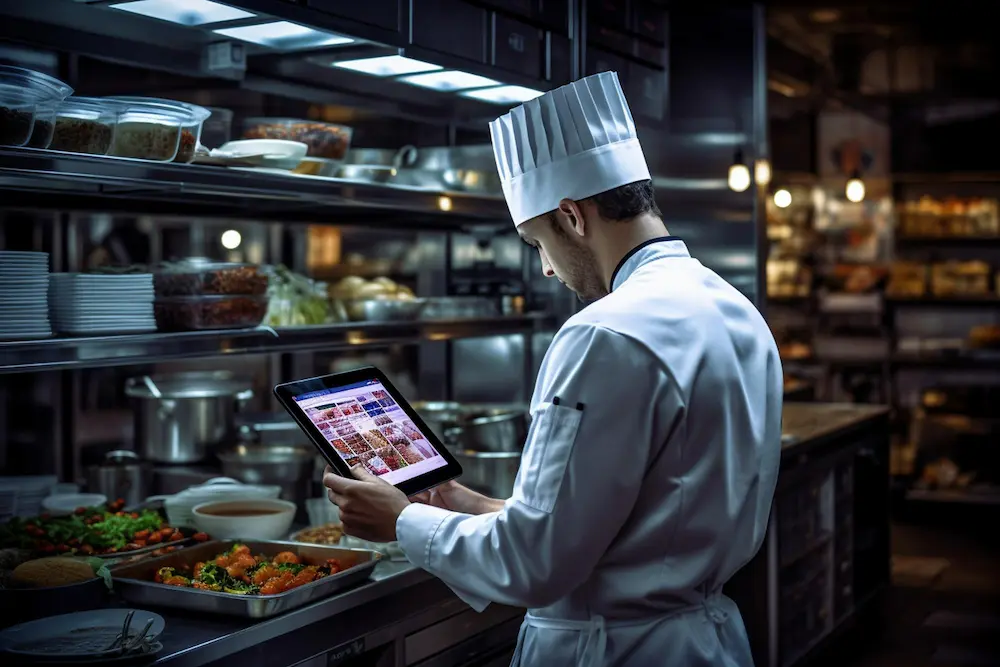The food industry is undergoing a massive transformation, driven by changing consumer preferences, environmental concerns, and technological innovations. In 2024, we can expect to see some exciting trends and technologies that will shape the future of food service and offer new opportunities for growth and differentiation. Here are some of the key trends and technologies to watch out for in 2024:
Contactless Ordering and Delivery
The COVID-19 pandemic has accelerated the adoption of contactless ordering and delivery, as consumers seek convenience, safety, and hygiene. According to a report by Zomato, online food delivery in India grew by 176% in 2020 and is expected to reach $12.5 billion by 2023. Contactless ordering and delivery allow customers to order food online or through mobile apps, and receive their orders without any physical contact with the staff or the delivery person. This reduces the risk of transmission of viruses and bacteria and also saves time and labour costs for food service operators. Contactless ordering and delivery can be facilitated by various technologies, such as QR codes, digital menus, voice assistants, chatbots, drones, and robots.

Cloud Kitchens and Virtual Brands
Cloud kitchens, also known as ghost or virtual kitchens, are commercial kitchens that prepare food exclusively for delivery. They do not have any dine-in or takeout facilities and operate from low-cost locations, such as warehouses, basements, or trailers. Cloud kitchens can host multiple virtual brands, which are online-only restaurants that offer different cuisines, menus, and concepts. Cloud kitchens and virtual brands enable foodservice operators to tap into new markets, optimize their kitchen space and resources, and reduce their overhead costs. They also allow them to experiment with different menus and concepts, and cater to diverse customer segments and preferences.
Food Waste Management and Sustainability
Wastage of Food is a major global problem, with about one-third of all food produced for human consumption being wasted or lost every year. Food waste not only causes economic losses, but also contributes to environmental degradation, greenhouse gas emissions, and food insecurity. Foodservice operators are increasingly adopting food waste management and sustainability practices, such as composting, donating, recycling, and upcycling food waste, as well as sourcing locally grown and organic ingredients, using biodegradable packaging, and implementing energy-efficient appliances and equipment. Food waste management and sustainability can help foodservice operators reduce their environmental impact, save costs, and enhance their brand image and reputation.

Food as Medicine and Personalization
Consumers are becoming more health-conscious and aware of the link between food and wellness. They are looking for food that can prevent, treat, or manage various health conditions, such as diabetes, obesity, allergies, and inflammation. They are also seeking personalized food that can suit their individual needs, preferences, and goals, such as weight loss, fitness, or immunity. Foodservice operators are responding to this demand by offering food as medicine and personalization options, such as functional foods, superfoods, nutraceuticals, probiotics, and customized diets. Food as medicine and personalization can help foodservice operators attract and retain customers, increase customer loyalty and satisfaction, and create a competitive edge.
Food Automation and Artificial Intelligence
Food automation and artificial intelligence (AI) are revolutionizing the food service industry, by enhancing the efficiency, productivity, and quality of food preparation, delivery, and service. Food automation and AI can be applied to various aspects of food service, such as robotic chefs, automated vending machines, smart refrigerators, AI-powered customer interactions, and predictive analytics. Food automation and AI can help food service operators reduce human errors, improve food safety and hygiene, optimise inventory and supply chain management, and increase customer engagement and retention.

Virtual Reality and Immersive Dining
Virtual reality (VR) and immersive dining are emerging trends that offer novel and exciting experiences to customers. VR and immersive dining involve using VR headsets, 3D projections, sound effects, and aromas to create a realistic and immersive environment that enhances food and beverage consumption. VR and immersive dining can transport customers to different places, times, or scenarios, such as a tropical island, a medieval castle, or a futuristic city. VR and immersive dining can help foodservice operators differentiate themselves from the competition, increase customer satisfaction and loyalty, and generate word-of-mouth and social media buzz.
Conclusion
The food service industry faces many challenges and opportunities in 2024, as it adapts to changing consumer behaviour, market dynamics, and technological innovations. The trends and technologies discussed above are some of the most promising and impactful ones that will shape the future of food service and offer new avenues for growth and differentiation. If you are a food service operator or an aspiring entrepreneur, you need to stay ahead of the curve and embrace these trends and technologies to succeed in the competitive and evolving food service industry. To achieve that you require a kitchen just as trendy and future-proof as the Industry. As an expert in commercial kitchen design, HPG Consulting will help with designing and implementing food service facilities for various industries and sectors, HPG Consulting can help you achieve your goals through innovative and sustainable solutions customized to your needs and budget.